Six miles away from my office is a theater that plays Bollywood movies simultaneously with their Indian release. This is one of them.
***
Jab Tak Hai Jaan
Directed by Yash Chopra, 2012
***
WHAT CAN WE GUESS THE FILM IS ABOUT FROM THE UNSUBTITLED TRAILER?
Bollywood superstar Shah Rukh Khan (or, “SRK”) plays an incomparably stubbled member of the Indian Armed Forces whose motorcycle trip is interrupted by thoughts of girls. His is an artist’s soul, revealed through fleeting images of guitar-wielding promenades in foreign environments and vigorous dancing before hooting crowds of Anglo-Saxons, as well as a poetical voice-over narration. Alas, it is all a wistful flashback, as memories of — non-exclusively — (1) girls smiling, (2) girls leaning in a winsome manner, (3) girls twirling in the snow and (4) girls otherwise gesticulating prettily are interrupted by a barrage of b&w color-corrected images accompanied by an ambulance’s siren: bad news. Clearly we are in for a film of love, loss and potentially decorative wartime. His thirst for aesthetics duly slaked, SRK then concludes his journey to the Exploding Desert.
***
WHAT IS THE HISTORY BEHIND THIS PICTURE?
It would be a mistake to call Yash Chopra — founder of Yash Raj Films — an exclusive romantic, although that would probably be the impression his corporate body would prefer you have. It has been good business in Bollywood to set love stories down as the foundation of your art, yet the young Chopra, born in Lahore prior to the partition, began his filmmaking career with the social dramas Dhool Ka Phool (1959) and Dharmputra (1961), films that built him a reputation for dealing earnestly with issues of Muslim/Hindu conflict fostered by the establishment of India and Pakistan along religious lines. Later, in the ’70s, Chopra became one of the architects of the ‘angry young man’ persona for megastar actor Amitabh Bachchan; by this point the director had already become famous for the hot-blooded boy-girl melodrama (and Yash Raj foundational picture) Daag: A Poem of Love (1973), but ask a connoisseur and they’re more likely to cite Big B raging against god and society in Deewar (1975) as a decade’s highlight over anything more outwardly lovey.
But then, it is very possible to bask in the heated emotions of these films, this aesthetic of gut feeling, of human connection trumping religious or national or caste division on the basis of what seems, intuitively, to be the ‘right’ way to behave, and declare Yash Chopra a Romantic in the macro sense, irregardless of the presence of any picturesque Swiss lake presiding over the action of a tender little song.
Still, there’s no denying that the rough ‘n ready ’80s were tough on Chopra, or that his revival as a film director of popular relevance came by way of Chandni (1989), an exceedingly backlit vehicle for the always-great Sridevi Kapoor that ensured Chopra-as-director would never venture far from romance-as-genre ever again; perhaps his biggest departure since would be Darr (1993), and only then because nominal hero Sunny Deol is all but blown off the screen by the picture’s obsessive villain, played by a 28-year old Shah Rukh Khan in one of his most indelible early roles.
Darr, in fact, represented both a beginning and an end for Chopra and Yash Raj – two years later, Chopra’s son, Aditya, would pair with SRK for the enormously lucrative Dilwale Dulhania Le Jayenge (see our last episode for more). Neither man would ever direct a film without Khan again, and Yash Raj — which, until the 21st century, in movie production terms, had served mainly (if not exclusively) as a vehicle for the Chopras to release their own directorial ventures — would build its own shooting studio and enter a period of promoting new, young directors through in-house productions, albeit with A. Chopra often providing story synopses in what I tend to imagine is a rather Stan Lee manner.
Yash Chopra died on October 21, 2012, having completed shooting on all but one song sequence for his newest directorial outing, Jab Tak Hai Jaan. It had already been rumored that Aditya Chopra — officially the producer and writer (with screenplay aid by Devika Bhagat) — had directed portions of the film in his father’s name, but the younger man declined to shoot any posthumous scenes. Perhaps he was distracted by the contemporaneous and unwelcome characterization of Yash Raj as a Marvel-like evil empire; the company had secured agreements from theaters requiring their exhibition of Jab Tak Hai Jaan for a certain period as a prerequisite for receiving an earlier, much-anticipated Salman Khan vehicle, Ek Tha Tiger, and Ajay Devgn, a producer and actor, had subsequently filed a claim with the Competition Commission of India against Yash Raj, alleging “abuse of dominant position,” insofar as his own production, Son of Sardaar — the latest among multitudinous neo-masala remakes of Telugu-language pictures — could not manage adequate bookings as a result.
The claim was dismissed, but Yash Raj couldn’t entirely shake its verdict from the court of public opinion, whereby not a few observers deemed Jab Tak Hai Jaan and its eventual Rs 100+ crore domestic gross the beneficiary of protectionism and cunning. Worse yet, Devgn’s film company is supervised by the former Kajol Mukherjee, Devgn’s wife and SRK’s co-star from A. Chopra’s Dilwale Dulhania Le Jayenge, giving the whole affair a smack of familial betrayal. Nonetheless, it also became a notable hit overseas, standing as only the third-ever Bollywood film to land inside the U.S. Top 10 grossers for the week of its release. Clearly some romantic perceptions endure at a remove.
***
WHAT HAPPENS BEFORE THE INTERVAL?
Shah Rukh Khan! Grimly stubbled! Martially attired! He rides through a blazing desert, reciting poetry by A. Chopra! Violins arranged by ACADEMY AWARD(TM) WINNER A. R. Rahman leap on the soundtrack, while the middle-aged gentleman in the row ahead of me bobs his head! Then: a beautiful woman strips out of her workout gear to a teeny-tiny swimsuit! Yash Chopra: still randy at 80! She leaps into a mighty stream but oh – she cannot handle the water! Grimly, SRK deigns to save her life, then zooms away stoically on his manly motorcycle! But he left his fucking diary! Perhaps the secrets of his grim and manly stoicism are hidden somewhere… somewhere… in the past!
Jab Tak Hai Jaan is best described as pleasantly unspecific bullshit, or — more tactfully — a high-end entertainment. It’s basically an ‘epic’ romance, spanning the course of a decade and coyly implicating the occasional social issue; the intent, perhaps, is to prove more aesthetically nutritious than something like Son of Sardaar, though it’s basically still an unreal, sensuous fantasy steeped in an awful lot of Bollywood tradition. Indeed, the London setting of the flashback that takes up almost the entirety of the film’s first half — a 2002 that makes no effort to approximate period fashions or even attempt to hide the occasional Coke Zero advert — seems poised specifically to evoke memories of Dilwale Dulhania Le Jayenge, with SRK playing a similarly cocky goof of a twentysomething, on the prowl for honest, true love.
It must be said now that Shah Rukh Khan is 47 years old, and looks it. I will further suggest that his age doesn’t matter; part of the artifice of mainstream Bollywood films is that dependable male stars, heroes all, can presume to be as young as they please. Those corners of the audience prone to hemming and hawing will do just that, but in the end the public will buy it.
For women, the heroines, it’s very different.
I’m not about to make a bunch of ridiculous claims for mainstream Bollywood as a uniquely awful place for women — not in an American situation where as longstanding a directorial presence as Kathryn Bigelow hears prominent voices idly speculating that her success is attributable to her looks — but for an industry so interested in appealing to female ticket buyers, it’s a bit startling to see how lean the roles for women have become in Hindi pop film. The neo-masala wave has had an aggravating effect, with its emphasis on macho protagonists smashing their way to victory, but even romance-as-genre tends to slot women away for pining and pouting.
Into this scene comes the female lead of Jab Tak Hai Jaan, Katrina Kaif: the quintessential modern heroine.
Kaif is probably terrific with anecdotes. She was born in Hong Kong in 1984, and spent over a decade and a half shuttling with her English mother and numerous siblings to seemingly half the nations on earth — France! Japan! Poland! Belgium! — eventually settling into a modeling career in London. There, she was spotted by filmmaker Kaizad Gustad, and cast in a film titled Boom (2003), an experience that prompted the teenaged aspirant to relocate to Mumbai, despite knowing hardly any Hindi. Likely, she knew the language barrier wouldn’t prove goal-stopping – there is a long tradition in Bollywood of forgoing sync sound, after all, and virtually every performer ‘sings’ with an alternate voice anyway. What Katrina Kaif could offer, uniquely, was that touch of exotica useful in the ranks of models-turned-actresses, a mighty corps in the Mumbai ’00s. Filmmakers were perfectly willing to have her lines dubbed over by some native performer.
A funny thing happened, though – Kaif, having eventually paid her dues, developed a knack for appearing in blockbuster movies. Not starring, no – but appearing, in the way heroines today are generally made to ‘appear’ rather than ‘star.’ The only mainstream Bollywood actress under the age of 40 that I can even think of who regularly ‘stars’ in movies is Vidya Balan, with everyone else relegated to one-offs or ensembles, or the myriad pair-offs of boy-girl romantic comedies. Or appearances beside popular heroes in vehicles built around them.
Of the ten highest grossing Bollywood films of 2012, Katrina Kaif has been present for three (including #1, the aforementioned Ek Tha Tiger); aside from a cameo in a children’s animation thingy, that accounts for her entire year’s output. One of those appearances was even an item number: a gratuitous song sequence cameo by a performer otherwise uninvolved with the film, manufactured strictly for added value of some sort, be it star wattage or sex appeal. Some have claimed this sort of thing ought to be Kaif’s natural habitat; others say she’s not even very good at that.
Nose around the internet — or hell, read YouTube comments — and you’ll hear that Katrina Kaif cannot act. That she’s nothing but eye candy. That she’s stale eye candy – Kaif is 28 years old now, which places her perilously close to the Logan’s Run limit of a heroine’s viability as sufficiently fresh visual stimulus. Every so often you’ll get a Madhuri Dixit or an Aishwarya Rai Bachchan who remains viable in mainstream supporting roles into their 30s, but they are rare.
As such, in the spirit of contrarian joie de vivre for which this website has become enthusiastically footnoted, I will now suggest a new paradigm for the evaluation of Katrina Kaif performances: “Does Katrina Show Up?” Which is to say, she always appears, but – does she show up?
You see, my extensive Bollywood research has led me to conclude that the much-maligned Kaif is actually a pretty charismatic performer, but at the same time she’s realized that the nothing roles available to her require little to no particular effort on her part; indeed, Kaif herself has stated that she didn’t feel particularly free or confident to contribute actively to a film until 2009, over half a decade into her professional career. Other times, she really needs only be there to be photographed, and so that, I theorize, is all she does. Ek Tha Tiger is the perfect example of a Katrina Kaif role in which she seems entirely disengaged from the movie surrounding her, because – as logical observation dictates, what the fuck will she have to do in a goddamned Salman Khan movie anyway? But compare that with the 2011 Yash Raj romantic comedy production Mere Brother Ki Dulhan, where her role affords her ample opportunity to point guns and play drunk and engage in many forms of wholesome rebellion, and suddenly – she clicks.
Kaif’s role in Jab Tak Hai Jaan seems engineered to flatter all of her strengths. She is SRK’s London-based love interest (autobiography!), initially connecting with him to brush up on the Punjabi singing (language barriers!) that will surely please the rigid father who’s set her up to marry some monied dude she doesn’t particularly love (tropes!). She’s also a withdrawn, internal woman and a devout Catholic, prone to cutting little quid pro quo deals with Jesus to get (or perhaps justify) what she wants; this is the most important aspect of Kaif’s character, as it allows rakish SRK — at one point taking her on a role-play date in which he goes by the same name as his character from Dilwale Dulhania Le Jayenge, in case you didn’t get it — to release her inner wild child, which is fortunate, as what Katrina Kaif is best at doing is playing at a lack of inhibitions.
In this way, Jab Tak Hai Jaan becomes a metaphor for Kaif’s career as an actress; it’s the most apropos role she’s ever had. “Does Katrina Show Up?” YES.
There are other small rebellions in the first half of the film. After kneeling down with SRK to pray she won’t do anything untoward with him (Catholic girls!), Kaif takes him along to meet her estranged mother — ’70s star Neetu Singh, demonstrating that nostalgia cameos are an additional avenue of exposure after a comfortable hiatus — who readily admits that leaving her husband improved her life, as it allowed her to marry for love. Before long, the song Saans is playing, boasting Rahman’s most intense violins of the show and an impressive bait ‘n switch on visual expectations – where prior Yash Chopra films would present “dance sex” to approximate the lovemaking of the ecstatic couple, near-miss kisses and all, Jab Tak Hai Jaan has the dancing segue into an actual sex scene, thereafter blooming outward into a Bollywood tribute to public displays of affection. Enjoy this PG promotional abridgement:
This is a huge departure for SRK, who’d vowed to never so much as kiss a woman onscreen again after performing a sex scene in a 1992 art movie, Maya Memsaab, reportage on which had alleged the married actor had actually ‘done the deed’ with co-star Deepa Sahi. In the most colorful variant on ensuing events, Khan then threatened to sodomize and castrate one of the offending magazine’s reporters in front of his (the journalist’s) parents – SRK was subsequently arrested, and then used his phone call to further threaten the luckless hack, who it turned out hadn’t even authored the offending dispatch.
The sex in Jab Tak Hai Jaan, in contrast, has prompted little real-life upheaval, though perhaps the eventual upheaval among the film’s characters boast some real-life anchor. So delightful is the erotic frenzy of the film’s Khan and Kaif, that the latter neglects to actually call things off with her arranged marriage, and verily suffers an acute religio-emotional episode when SRK gets whacked by an oncoming vehicle. Another deal is struck with Sir Jesus: her lover’s life, in exchange for her agreement never to sin with the man again. Khan is irate at this turn of events, and vows in church — before God and London, his non-belief notwithstanding — that his vengeance on the Almighty will be total, that he will place himself into such a dangerous, awful line of work that his inevitable death will destroy Katrina Kaif’s relationship with Christianity.
And then, metaphorically, we see the older Khan, ten years later, striding through the Exploding Desert without a care, because Jesus Christ has made him invincible.
Critical to the Shah Rukh Khan creation myth is an incident of 1990, where the young Khan, a Sunni Muslim, rebuffed by Gauri Chibba, the Hindu girl he’d been seeing, pursued his lover from Delhi to Bombay, searching up and down for seven days and seven nights, and on the eighth day he found her, and he married her the next year, Gauri Khan, whom he would zealously defend from the slights and innuendos of entertainment journalism and leering theology as they raised children, two children, of two religions.
***
WHAT HAPPENS AFTER THE INTERVAL?
Oh, right! Remember the girl who found the diary?
Anushka Sharma can perhaps be called a mirror held up to Katrina Kaif. She too began as a model, albeit in India, and made her film debut by the intercession of an interested director. That director, however, was Aditya Chopra, who cast Sharma opposite SRK in Rab Ne Bana Di Jodi, a 2008 feature and (at the moment) A. Chopra’s most recent solo directorial work. And of the five films in which Sharma has subsequently appeared, four have been Yash Raj productions; like in old-time Hollywood, she was signed to a multi-picture studio deal upon discovery, and some — having seen the moody-cute role given her in Rab Ne Bana Di Jodi — wondered if she had much of a future outside the studio.
For me, Anushka Sharma does not begin in that film. She begins in her third Yash Raj movie, Band Baaja Baaraat (2010), in which she debuts a survival instinct 180 degrees away from that which I’ve attributed to Katrina Kaif – while Kaif seems to sleepwalk through roles she knows don’t have a lot to interest her, Sharma guns it into overdrive, 101%, every single time.
For the purposes of illustration, behold an abridgement of Jiya Re, Sharma’s showcase number in Jab Tak Hai Jaan, seeing her charm the living shit out of SRK, the Indian Armed Forces and gaggles of children and horses, even if it kills them all:
I genuinely have no idea if Sharma is a ‘good’ actress, but I won’t tolerate a single negative word. Did you count how many times she fucking winked? Four times in two minutes: levels unseen Stateside since the close of the Jazz Era.
There is good utility to all this – every millisecond of an Anushka Sharma performance serves primarily to draw your undivided attention to Anushka Sharma, to the exclusion of virtually everything else. This is a way to stand out, to convert a romantic pairing into a star vehicle, which is exactly what Sharma did in Band Baaja Baaraat and Ladies vs Ricky Bahl (2011), both opposite nondescript leading hunk Ranveer Singh (which, admittedly, is probably like interacting with a particularly advanced special effect). Moreover, it’s a style of acting perfectly applicable to Indian pop cinema – and maybe no other cinema in the world, save for that of Guy Maddin, but Sharma no doubt knows exactly where she’s at.
Shah Rukh Khan, however, is not one to be out-hammed.
Sharma eventually tracks down SRK — who is working with a bomb disposal unit in Ladakh — in hopes of jump-starting her media career with a megahit Discovery Channel documentary (on right after Amish Mafia, one hopes). No information is ever given as to the origins of the IEDs Khan is defusing; we’re basically made to accept the presence of such threats as challenges dropped from Heaven. Or perhaps we can presume that A. Chopra has seen The Hurt Locker, just as he presumably read Graham Greene’s The End of the Affair (or saw a movie version) for the whole bargaining-with-God-for-a-lover’s-life thing; surely he meant for the title “Jab Tak Hai Jaan” to evoke Haa Jab Tak Hai Jaan, a song from Sholay, the Jaws of ’70s Bollywood – he’s a packrat and a perpetual student, this younger Chopra, often guilty of exactly the sort of hybridization for hybridization’s sake everyone kept laying at the feet of Quentin Tarantino in the ’90s.
Tarantino, though, is more of an intellectual writer, to the point where his films adopt an essayistic quality; A. Chopra prefers the broad, sensual flourishes of the filmi world in which he was raised, where a romantic comedy variation on The Hurt Locker can see invincible SRK hanging below a bridge, with no protection, de-wiring a bomb while Anushka Sharma projects flirtations somewhere into western Baltistan. Workin’ it like Clara Bow has its brute force effect, and soon rough ‘n nasty post-Jesus SRK is manfully preparing to head back to London for fact-checking on footage shot by Sharma, who functions metaphorically as a genre superfan of sorts – a girl with a tendency to quote old movies in regular conversation (if the folks in my audience finishing her dialogue for her are any indication).
Really, what Sharma wants to know is if this old, crazy love story she read in the diary, this ersatz Yash Chopra movie of the first half, this self-referential thing – she wants to know if any of it’s real. The Chopras are kind to her; she’s forward, spunky, and sexually active, and never punished for any of her behavior, even when her shojo manga heroine-like clumsiness causes a building to explode. But still, she longs to know if movies are true, if people fall in love like that, if she could fall in love like that. It’s a writer’s justification for his craft – maybe his father’s work too.
And then SRK shows up at the Discovery Channel’s London bureau and is immediately hit by another goddamned car, revealing the true message of Jab Tak Hai Jaan: England has the worst drivers on the entire bloody planet.
Stripped of his Jesus powers, a bedridden SRK develops an awesome case of movie amnesia, believing he’s in fact woken up from the first time he got mowed down UK-style. Obviously, Sharma must then track down Katrina Kaif — who, in the interests of not having to deal with anything else in a 175-minute motion picture, has not managed to marry herself off to anyone — in the hopes of easing Khan back into the world. And then, as medical science inevitably demands, Kaif pretends that her and SRK have been married the whole time and are living in a fine home, leading to several great moments of interior decoration porn, and probably the best joke of the whole movie, wherein Kaif meets Khan at the front door with a Hindu greeting, and he grins widely at her now apparently less-exclusive take on organized religion.
Although, now that I think of it, we never do hear of Khan’s personal beliefs (if any) in the film. The real joke might be that she guessed the wrong faith. Catholics!
At this point, the Chopras cruelly tease that Sharma might go full-on Bad Maria and become the antagonist of the picture, but against most generic expectations she winds up acting in a basically logical and sensitive manner, admitting that she really loved the gruff SRK who’d passed through a (conveniently distant) flame, thus excusing herself from the climax, and — if Wikipedia is any indication — the entirety of mainline Hindi film, as her list of forthcoming projects looks like a who’s who of ‘mainstream-alternative’ auteurs.
This allows the camera to dwell fully on Kaif, who, in advancing ten years down the timeline, is finally given the opportunity to play a character close to her actual age. Maybe the last chance she’ll have in a while, still on the treadmill.
But it’d be unfair to label this a purely surface-appeal picture notable mainly for the circumstances of its female leads’ careers and the magpie antics of its head writer. As he did back in Dhool Ka Phool, in Dharmputra — back when the partition was still a recent memory to some — Yash Chopra seeks to dramatize the emotional toll of religious separation.
SRK regains his memory, of course; in the midst of a bomb threat on a local train, the London police — just a shade more competent than London drivers — allow Our Hero to play with the wiring of the explosive device upon the recitation of lots of exciting bomb facts (this is also how I became a movie critic). Now aware of the whole situation, Khan confronts Kaif in church — in front of the tabernacle! — and declares that she ultimately loves him more than she loves Jesus. Then he returns to Ladakh, because, like Jeremy Renner, he just can’t get enough.
The message is simple, and obvious: excessive religiosity (or any sort of grand, declaratory societal apparatus) leads only to repression and unhappiness, while human connections are of paramount importance. This is the enduring message of the late Chopra, the Hindu Punjab born in the current Pakistan, his favorite leading man a Muslim with a father from Peshawar and a mother from Hyderabad, married to a Hindu woman. Anushka Sharma delivers a speech for her documentary debut. Shah Rukh Khan is defusing the final bomb of his career. Katrina Kaif appears, having pursued him all the way up to the disputed territories. Suddenly – there’s a second bomb! SRK leaps into action!
Sharma declares that SRK’s defusing his last bomb. “It’s his last not because he’s suddenly scared of dying. It’s his last because it’s his time to live.”
The wire is cut. He rises to his feet and asks Kaif to marry him.
“It’s just a simple story of love,” Sharma remarks, and the picture fades into a behind the scenes montage of the late director Yash Chopra, who couldn’t stand to go out on anything less than affirmation.


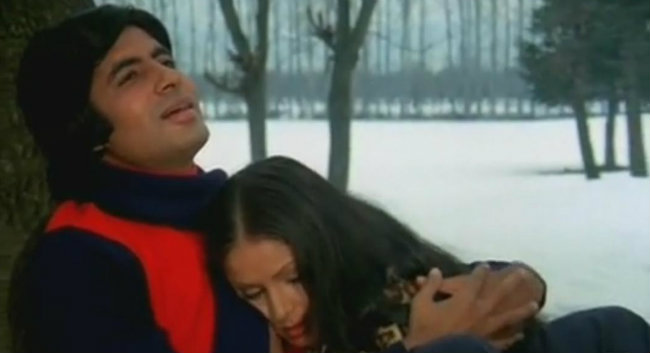
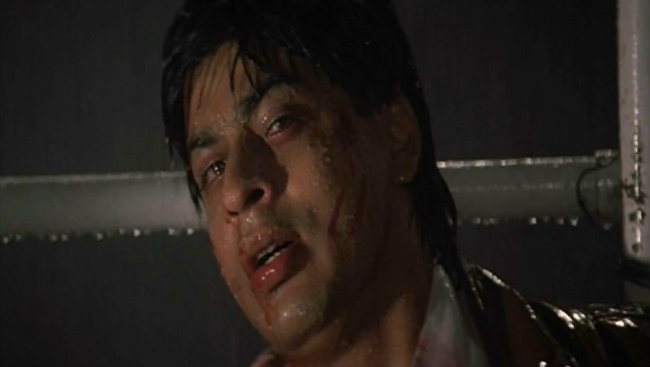
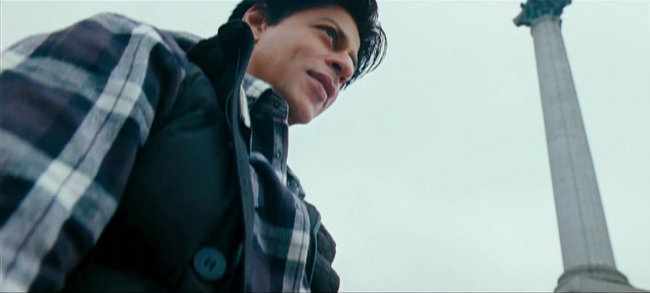
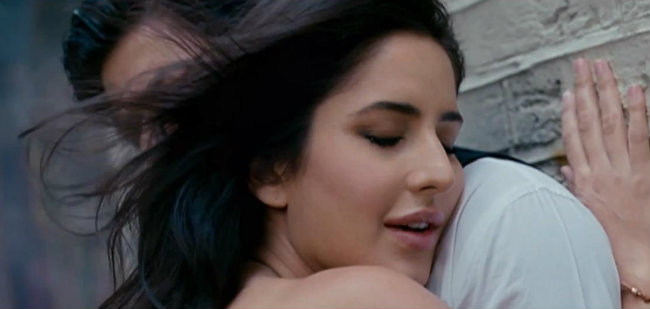
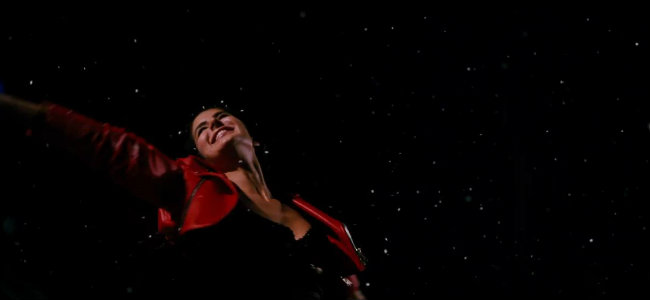
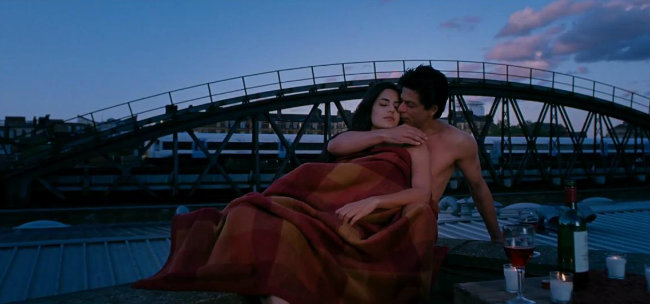
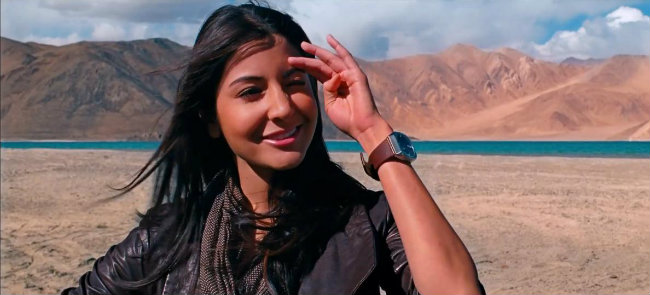

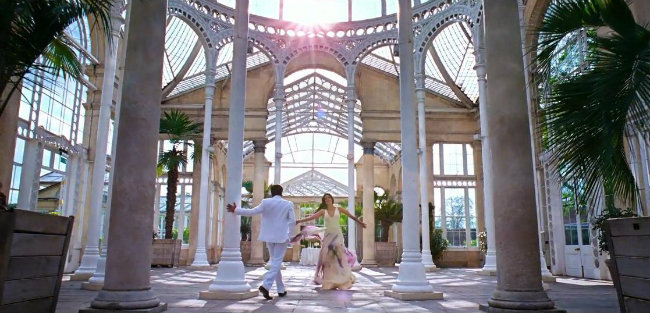
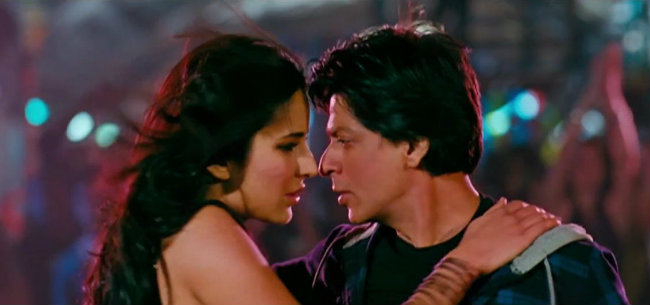
SPECIAL UPDATE – Your appetites duly whetted by footage from the mighty Don linked supra, please enjoy this special preview of Amitabh Bachchan’s English-exclusive debut in Baz Luhrmann’s The Great Gatsby:
http://www.youtube.com/watch?v=h7AFnJbETLw
Just one of the many exclusive pleasures available to you, the legion behind The Most Popular Movie Column in the Entire World.
Yes!! I’e been waiting for this!!
That’s an interesting note about having the actress play a character closer to her real age. How old is the Bollywood machinery, and is it reaching a point where a glut of bankable stars will be reaching a certain age – like in Hollywood, where the stars and plots are aging up along with the Boomers?
That aside I really enjoyed this review, very funny.
As far as male stars go, the top earners still tend to date from the late ’80s, early ’90s – basically the gradual revival of theatergoing following the economic doldrums of the ’80s. Salman Khan, Aamir Khan, Shah Rukh Khan — no relation between any of these guys, btw — are all actually within one year of each other in their late 40s. Akshay Kumar and Ajay Devgan also started around the same time, albeit in grittier crime & action pictures – they’re in their mid- and early-40s, respectively. Even Hrithik Roshan, who was the ‘big’ new star of the ’00s, is now nearing 40. But like I mention above, age isn’t all that big a deal for male stars – someone like Sunny Deol, while not quite the moneymaker he used to be, still headlines the occasional project at 56. So does Anil Kapoor, 52. Hell, so does Amitabh Bachchan, and he’s 70.
However, male stars sometimes go through soft periods – Salman Khan is pretty obviously the big, reliable money right now, but he was considered if not washed up than at least into the steep decline until the neo-masala wave basically kicked off with his 2009 vehicle Wanted (no relation to the Mark Millar opus). Likewise, a sturdy-ish B-plus/A-minus performer like Saif Ali Khan has been around since the mid-90s, but only really rose to headlining prominence in the ’00s.
As for new, young stars, Bollywood might be even worse off than Hollywood, if mainly because stars really do still matter in India. A lot of the big U.S. tentpole pictures rely on pre-established media franchises, high concepts and special effects, but the top-grossing Bollywood films of the year — (1) Ek Tha Tiger, (2) Rowdy Rathore, (3) Agneepath, (4) Housefull 2, and (5) Barfi! — can just as easily be listed (1) Salman, (2) Akshay, (3) Hrithik, (4) Akshay (leading an ensemble), and (5) Ranbir Kapoor, Rishi Kapoor’s son, who’s 30 years old and basically the only guy anybody is seriously considering a ‘new’ star hero at the moment. Cases can arguably be made for Shahid Kapoor (no relation, but also the son of an actor), Imran Khan (Aamir Khan’s nephew) and Emraan Hashmi (nephew of a big-time producer/director, and cousin of Alia Bhatt of Student of the Year), but none of them have quite guaranteed themselves as reliable solo draws yet.
As for the plots, a lot of them just sort of pretend the big male stars are much younger than they are, and most audiences seem to play along… still, that effect won’t last forever.
Thank you for the detailed answer!
I guess my next question would be about the demographics of the audience in India. If there are a lot of older theater-goers, could those matinee idols play older romantic leads, or is romance a young man’s genre?
The situation you describe sounds worse than Hollywood, but about at the same place as black male leads in Hollywood. Although with Anthony Mackie now cast in a couple upcoming Avengers movies, there’s at least a small chance for new blood. (And then there’s Jayden Smith, speaking of filmic dynasties, aha.)
It’s sort of hard to gauge audience demographics in India – movies are really, really popular in general, in a lot of regional industries, some of which don’t keep very close (public) records of theatrical grosses, let alone audience breakdowns. A lot of the time considerations circle around class – your A B and C-centers of Telugu cinema, and your urban multiplexes vs. regional single-screens of Hindi film. The presumption is multiplexes attract a somewhat younger, more monied crowd, although it’s clear plenty of youths attend local single-screens as well… but usually when you hear of a movie courting a specific audience in pop cinema terms, it’s the ‘multiplex crowd’ Class audience.
There are substrata of movies going on too – looooow-budget exploitation movies and the ‘parallel cinema’ of dedicated art film… but for mainline Bollywood, I kind of expect its output to follow the illusion-of-youth aesthetic generally favored by Hollywood too. After all, there were many stars and heartthrobs of earlier Indian generations, and they didn’t create a wave of wizened genre pieces…
Although, now that you mention it, there was an attempt at an ‘older characters’ romantic comedy earlier this year: Shirin Farhad Ki Toh Nikal Padi, starring Boman Irani (one of those recognizable character actors who do 5-7 movies per year) and Farah Khan (who’s best known as a director/choreographer, although she’s enough of a miscellaneous media celebrity to warrant a gamble on a big acting role) – it did poorly. On the other hand, Sridevi Kapoor’s first vehicle in years and years (English Vinglish) was a big popular and critical hit, so there’s always outliers…
‘Every Man For Himself and God Against All’ — this was the German title for Werner Herzog’s ‘The Enigma of Kaspar Hauser’: ‘Jeder für Sich und Gott gegen Alles’.
I’m trying to wrap my mind around what links unite these two movies…but my brain hurts too much.
Mostly I just appreciate the phraseology; it implicates the self-preservation the actresses engage in (at least, as I suggest above), as well as the role religion plays in the story, keeping the lovers apart… “Man” as a gendered term is used with irony, of course.
There’s also a very tenuous connection between the films, in the notion of casting performers for reasons other than proven acting prowess, although the intent varies…
Thank you again for your second detailed answer!
It’s criminal that there aren’t more comments on this piece. I keep coming back and reading parts of it and smiling at the phrasing.
i have mixed feelings about this film i guess as this is the 1st time tha srk broke his 20 yr rule of kissing on screen i wonder how gauri his wife felt and is he going to be doing this from now on? i hope not as i respect him a lot but then they are movie stars …..nd california……
i have mixed feelings about this due to the fact that srk broke his 20 yr rule about on screen kissing, is he going to bedoing this from now on? hope not and how did his wife GAURI feel about?